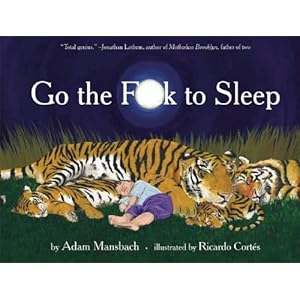It seems that reports of the death of books have been greatly exaggerated (with apologies to Mark Twain). As the numbers continue to roll in, it's clear that people still read, more titles are being published than ever, and e-books are taking their place alongside print books, not replacing them. As reported in "Is the Book Dead? Let That Myth Rest in Peace" from The Atlantic, 288,355 new and reissued titles were published in 2009, and Bowker (the data agency for publishing) speculates that the numbers will be higher in 2010 and 2011. And -- here's a really astounding statistic -- an additional 764,448 titles fell into the self-published, micro-niche and print-on-demand categories.
Think about that for a moment. For the first time in publishing history, authors are self-publishing more books than publishing houses are producing. Considering that these numbers are over a year old, and advances in e-publishing are happening faster than you can download an app from the iStore, 2011 could potentially near the one million mark in self-published titles.
Upon hearing this, many seasoned authors (read: those with several traditionally-published books under their belts) worry about the lack of gate-keepers. If so many people are self-publishing (and publishers are paying attention to successful self-published efforts, as described in this Publishers Weekly article), who's going to decide what's good? Who's going to create the buzz, tell us what to buy? Without the taste-makers, how will we know what to read?
It's a seismic change, to be sure. And like all changes, it feels a bit scary. But the answer boils down to one word: you.
You, as the consumer, get to decide with your dollars what constitutes a good book. Sure, book buyers always voted with their purchases, but the pool of choices was limited by what publishers presented. And publishers often make decisions based on non-artistic criteria: Does this book cash in on a current trend? Is the market broad enough to make a substantial profit? Will it stay on the shelves of Barnes & Noble for more than three months? Is the author a celebrity? Many great books get published each year, but just as many great books get rejected because they don't quite fit the corporate plan. Readers have never had the opportunity to decide for themselves if those books deserve to exist. Now they can.
You, as the author, still have to put in the work, learning how to write, learning how to revise, and learning how to communicate with your audience. That age-old truth won't change. But now, after you've workshopped the manuscript, had it professionally edited and gotten the go-ahead from your writers' group, you have the power to see your words in print. Since self-publishing is rapidly losing its stigma as the last resort for rejected authors, you have a real choice of submitting to publishers or producing the book yourself. You also now have a choice of paper or electronic formats. Low-cost and no-cost options for e-books mean you can make your dream a reality without a trust fund.
You, as the publicist for your book, can generate reviews, create a buzz, connect with readers and set up personal appearances in direct proportion to the amount of time you're willing to devote to marketing. You're not limited by the publisher's marketing dollars going to the big authors, or the New York Times' limited space in their book review section. The internet is the great equalizer, giving authors the same access to their audience as publishers have had. The more you reach out, the more sales you'll see. It's that simple.
The book is far from dead, and the opportunities for authors are more plentiful than ever. The only difference is that now both authors and consumers have more choices, which means they're responsible for deciding what constitutes a worthy book. As an author, you now have options: you can go the time-honored route of submitting to agents and publishers, waiting months for a reply, and hoping you're one of the lucky ones who gets a book contract. Then you can hope your book sells enough to get contract #2. Many authors still find success and fulfillment this way, and if you're one of those, then I'm looking forward to seeing your book on the shelves. But if you're tired of waiting, you believe in your book and you're not afraid to do the work necessary to get it out there, then for the first time you have equal (or very close) access to book production and marketing as the big publishers. And it's only going to get easier.
So make your choice. Your readers are waiting.
Interested in learning how to write a book and send it to children's book publishers? Come on over to The CBI Clubhouse for audios, videos, insider writing tips and much, much more!



